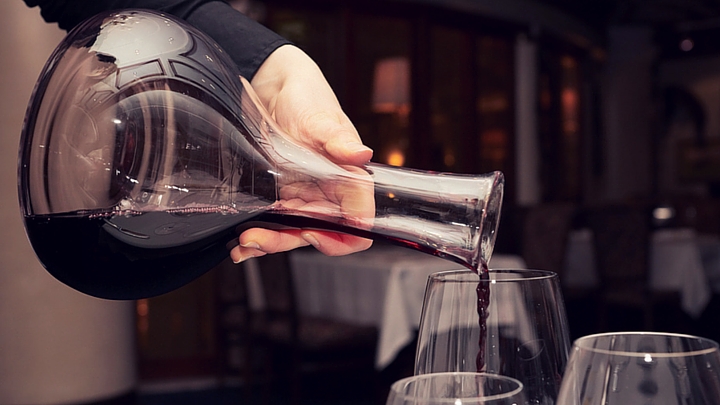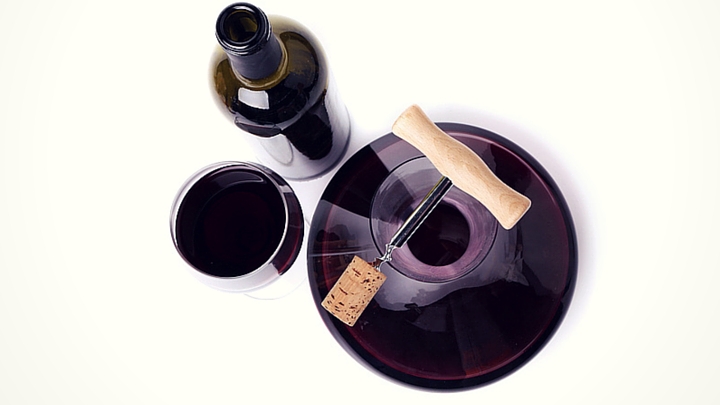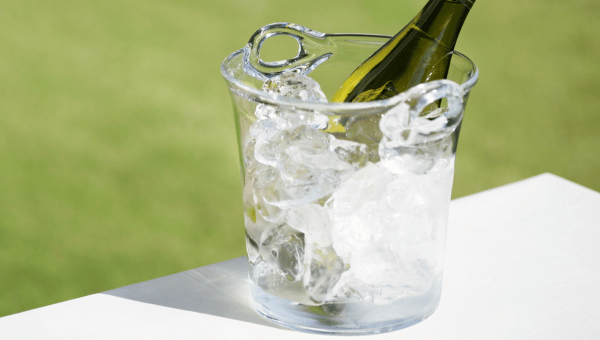Wine 101: How to Decant Wine?

One of the things we love about wine is that it is a living, evolving thing. Wines have so much depth of flavour and sometimes you just need to let them breathe.
This brings us to one of my favourite things to talk about, decanting. For some, this may be an alien concept but we are here to tell you that decanting wine can improve almost any wine, from everyday quaffers to the finest wines in the world.
Our readers ask us a lot of questions about the benefits of decanting wine, the types of wine appropriate for decanting, how to use a wine decanter, and whether decanting actually makes a difference to the taste and enjoyment of wine, so we’ve collected those questions and tried to answer them in this blog post.
What is decanting?
First up, maybe the most obvious question: what is decanting?
Decanting wine is a way to let the wine ‘breathe’ – this means putting the wine in contact with oxygen, and there are a few different ways to go about it.
You can use:
A Decanter
For all of you that are thinking, what is a decanter, here is your answer. This is perhaps the most well-known method of decanting. It’s a purpose built vessel that lets the wine breathe and get as much air in it as possible, often by using a wide, flat base, giving the wine a large surface area.
While there are many types of wine decanters available, other vessels such as jugs and even vases can often do the job just as well!
Double decanting
This involves pouring wine into a decanter of any kind, and then pouring it back into the original. This is a nice way of keeping the wine in its bottle whilst reaping the benefits of decanting.
It’s also great if you’re using a less aesthetically pleasing decanter. If there’s sediment left in the bottle, be sure to rinse this out before refilling.
Hint: using a funnel will make the return voyage much easier!
An Aerator
This is a device you attach to the top of the bottle to air the wine whilst you pour it.
What are the benefits of decanting wine?
There are some great reasons to decant your wine and you get many benefits from doing so. Don’t just take our word for it – try two glasses of the same wine, one which has been decanted, the other poured straight from the bottle.
First and foremost, it opens the bouquet and allows the wine’s flavours to really develop. Decanting the wine also gets rid of any smells from the wine sitting or smells that are trapped under the lid from the gases that are used to seal the wine.
Decanting certain wines also softens the tannins, which gives the wine a better mouth feel, particularly useful with full-bodied, younger reds.
Lastly, decanting the wine separates the wine from any sediment that might have settled in the bottle – sediment is a harmless and normal feature of wines, often showing that they haven’t been heavily processed.
Decanting the wine just generally makes the wine taste better, which is especially ideal if you are someone that really enjoys tasting wine.
Related: Check out our guide to tasting wine.

What types of wine can I decant?
Whilst it is mostly an accepted rule that you should decant reds, nearly all wines can benefit from decanting.
We will get to finding out how to decant red wine later, but for now here is a handy guide for which wines you should decant:
- Wines with visible sediment – the sediment will be left in the bottle, leaving a clear, bright wine
- Young wines designed to age – the aromas and flavours will develop, and the tannins will soften
- No added sulphur wines – to bring out the aromas and flavours, and to dissipate any petillance
- White Wines – those that are more full bodied, or designed to age will really benefit from decanting, and it is an attractive way of showing the colour of a wine
- Rosé – quality rosé wines will become more aromatic when decanted, but it is important to note that decanting the wine is likely to raise the temperate, so only decant white and rosé wine when they are really cold and only for a short period of time.
When to decant wine
Decanting wine is sort of like fast-forwarding the ageing process; therefore a young wine designed to be aged can benefit from two to three hours in a decanter, whereas an older wine, or one meant for immediate drinking might be best after just five minutes.
So generally speaking, the better quality, and more full-bodied the wine, the longer it can be decanted for.

How to decant wine with a decanter?
We’ve now explained why you should decant your wine and when to decant wine, now it’s time to explain the decanting process. For younger wines, and those without sediment, the bottle can simply be poured slowly from bottle to decanter. For older bottles, or those with sediment:
- Remove the foil and cork, or screwcap (yes, fine wines can come in screwcaps too!)
- Open the wine, smell it and take a sip – this will give you an idea of where the flavour of the wine is starting and is a helpful comparison when it comes to deciding on how long to leave it.
- Angle the decanter in one hand and the bottle in the other
- Pour the wine in one continuous motion, watching the bottle neck carefully to make sure any sediment isn’t creeping into the decanter. Hint: place a strong light below the neck so you can see the sediment.
- When you see sediment, slow your pour and keep the bottle nearly flat
Can I decant wine without a decanter?
Not everyone has a wine decanter to pour their wine into but with a few household items you can achieve a very similar result.
When it comes to decanting wine, you want to give it as much surface area as possible, which is why wine decanters look so strange, but with these three methods you can successfully air your wine without one.
1. Using a blender
- This is a method that wine purists are not so keen on, so maybe keep it quiet from any of your wine expert friends. It is also known as hyper decanting.
- You will need to strain the wine before it goes in the blender to remove any sediment
- Pour the wine into a blender and blend for 20-30 seconds.
2. Pourer/Aerator
- It’s a tool the goes on the end of the bottle that slows down the pour of the wine to add more air into it.
- Add to the aeration by swirling your wine in the glass before you drink it
3. Double decanting
- Simply tip the wine between two vessels to allow lots of air into it
- You will need to strain the wine at some point in this method to get rid of the sediment
Overall, wine is improved when you decant it and hopefully this article has given you an idea of when to decant wine, how to decant wine and how long to decant wine.
If you use these tips you could improve even the most underwhelming wine. And remember that wine should be fun – have a go and see if you can tell the difference!
You don’t need to buy a fancy decanter to begin with, use some of the at home methods to try your hand at it, and once you realise how great decanted wine it, you can invest in a proper decanter.






